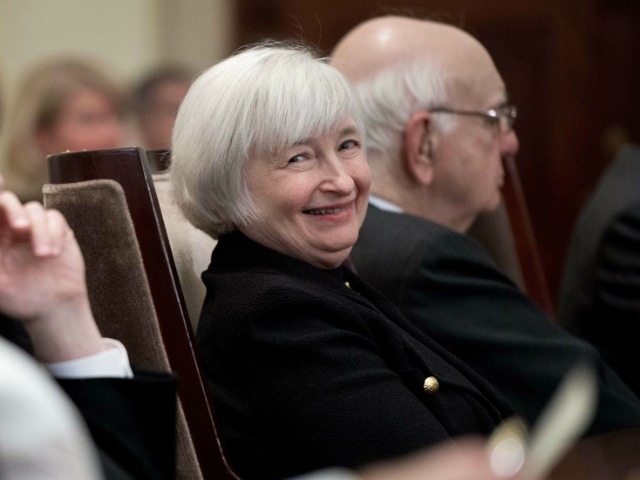
Stocks that comprise the volatile NASDAQ Composite Stock Index suffered their worst weekly losses in 15 months with a 2.8% plunge, as Wall Street continued to reel from Federal Reserve Chairman Janet Yellen’s March 19th warning that the Fed intended to begin a cycle of raising short-term interest rates within the next six months.
Former Federal Reserve Chairman William McChesney Martin famously said, the main job of the Fed is “to take away the punch bowl just as the party gets going.” As I pointed out on March 19th in “Fed Chair Yellen Indicates Higher Interest Rates Ahead,” Chairman Yellen was being clear at her press conference that the Fed committee that votes each month on whether to raise or lower interest rates had become very concerned about the risk of inflation breaking out, and the Fed would soon tighten credit.
Somehow, the Wall Street Journal’s Jon Hilsenrath tried to find an excuse for the Fed to continue the party in an article he quickly published stating “Wall Street might have glossed over news of greater consequence.” He added that the Fed “planned to keep short-term rates below what it sees as appropriate for a normal economy even after the unemployment rate and inflation revert to typical levels.” But this seemed to only amount wishful thinking that stock traders call “whistling past the graveyard.”
There already were concerns before Yellen’s press conference that the over-the-counter stocks trading at 49 times future expected earnings were a bubble that could burst. On Monday morning, the red-hot biotech stocks lost nearly 3% as investors worried the NASDAQ’s 2013 gain of 38%, described as “gangbusters” by Uri Landesman of Platinum Partners, could evaporate quickly. The selling pressure spread out over the next four days as the tech-heavy NASDAQ Index was down 2.8% for the week, its worst performance since October 2012.
Although higher short-term interest rates usually are associated with stronger growth in the main street economy and job creation, they are often the sign of the beast to hedge fund traders that take huge risks by leveraging up their investments with debt. Small increases in interest rates balloon to huge costs of interest for leveraged speculators.
The Federal Reserve allows banks to leverage their customers’ deposits by twenty times in loans to other customers. Consequently, when Chairman Yellen said the Fed would reduce its monthly purchases of bonds, known as quantitative easing, by $10 billion, she really meant that the Fed was reducing the monthly amount of loans that banks can make by $130 billion per month, equal to $1.3 trillion per year.
Furthermore, the U.S. financial system also has a huge layer of unregulated financial institutions that operate as lenders “in the shadows” by borrowing from the big banks and then re-loaning money to usually higher risk borrowers. These “shadow banks” are white knuckle lenders, hedge funds, broker-dealers, investment banks, private-equity funds, and even money market mutual funds across the globe. No one can be exactly sure how much of a rise in interest rates shadow banks can absorb and still stay solvent. But as the 2008 financial crisis demonstrated, shadow banks have similar business models and can similarly crash together.
The Fed appears to be concerned that asset bubbles are forming in speculative small stocks, junk bonds, and commodities and now wants to “take the punch bowl away.” The small stocks took it on the chin this week, but the price of larger stocks may also be at risk of a major sell-off.
The author welcomes feedback @ chriss@chrissstreetandcompany.com.
Chriss Street is teaching microeconomic at University of California, Irvine this spring from March 31 – June 8, 2014. Call Student Services at (949) 824-5414 or visit http://unex.uci.edu/courses to enroll!

COMMENTS
Please let us know if you're having issues with commenting.